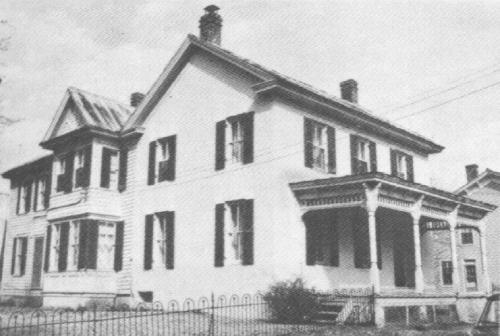Elizabeth Downes/Francis Sellers House
After scanning, the quality of some of the photos was not quite what I'd like them to be, but I hope you enjoy seeing them anyway.

FRANCIS SELLERS HOUSE
Hillsboro
Private
Hillsboro, located in the midst of a particularly rich farming area, has
been an agricultural trading center since earliest times. Easy
access to the Bay, via the navigable Tuckahoe River, aided its
development. Perhaps the two most influential figures in the
town's formative years were Francis Sellers, who emigrated from Glasgow
to Maryland in the last quarter of the 18th century, and his wife, the
former Elizabeth Downes. Elizabeth's father, Henry Downes, was a
figure of some prominence. He had served on committees to found
the Alms House, to supervise the building of a bridge across the
Choptank, to organize the early Methodist Church in the area, to located
temporary quarters for the newly formed county's first courthouse, and
so forth.
Sellers and his wife built a brick warehouse near the river, conducted a
mercantile business, and prospered. "With the natural
characteristics of a Scotsman, Mr. Sellers was energetic and thrifty in
business and active in the advancement of his community along
educational and religious lines. It seems that he must have
amassed a considerable fortune." (History of Caroline County.)
Doubtless some of the business profits went to the building of this
two-story, three-bay-by-two-bay, gable-roofed dwelling, which the late
Eleanor Horsey dates to the period 1784-1787.
About one hundred years later, the house's then-owner apparently grew
dissatisfied with the Federal style building and decided to bring it up
to date. To this end, he covered the brick pile in stucco, strung
a spindled and bracketed porch across the front, and added a long
clapboard wing, complete with two-story hexagonal bay window, to the
rear.